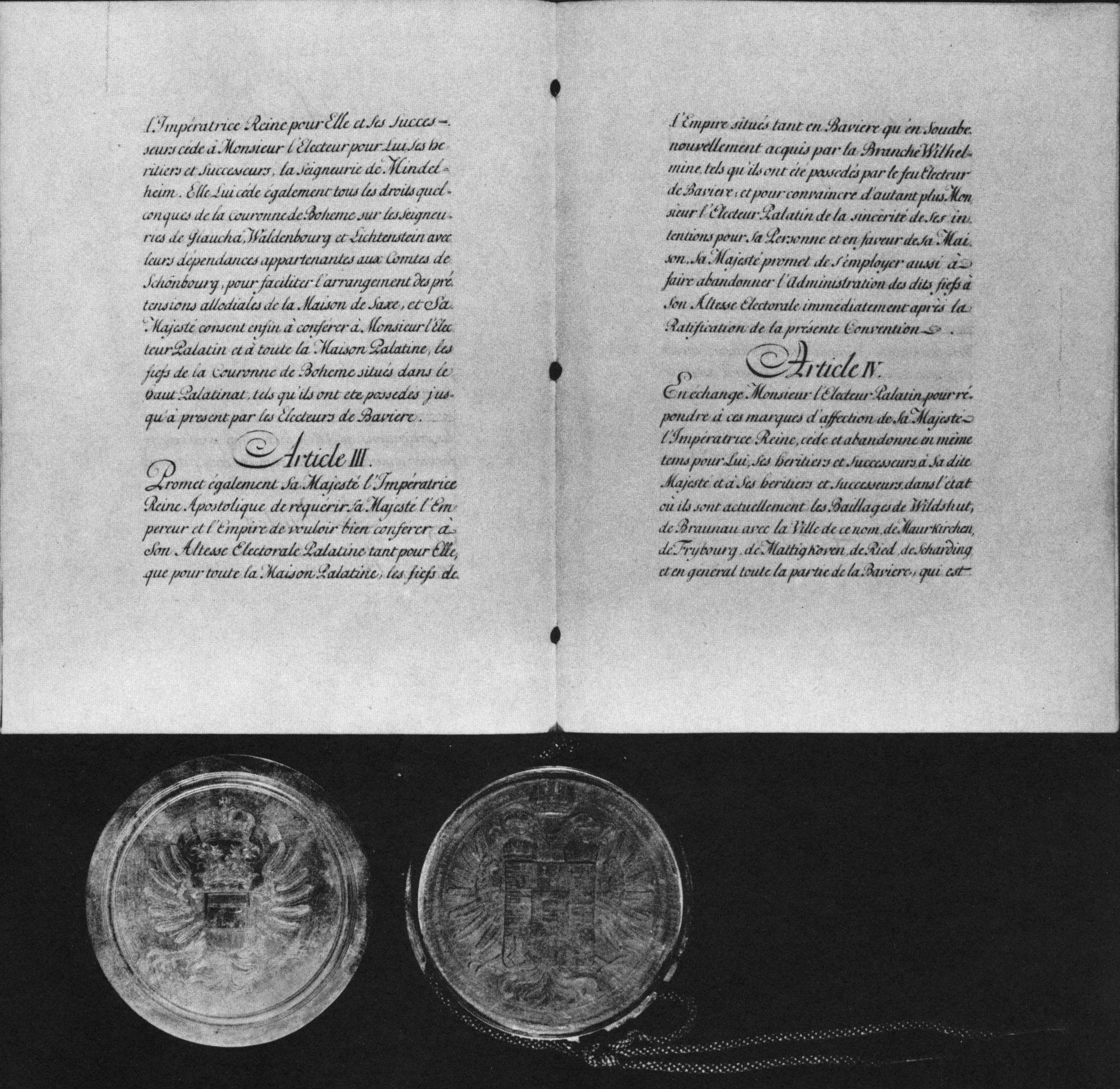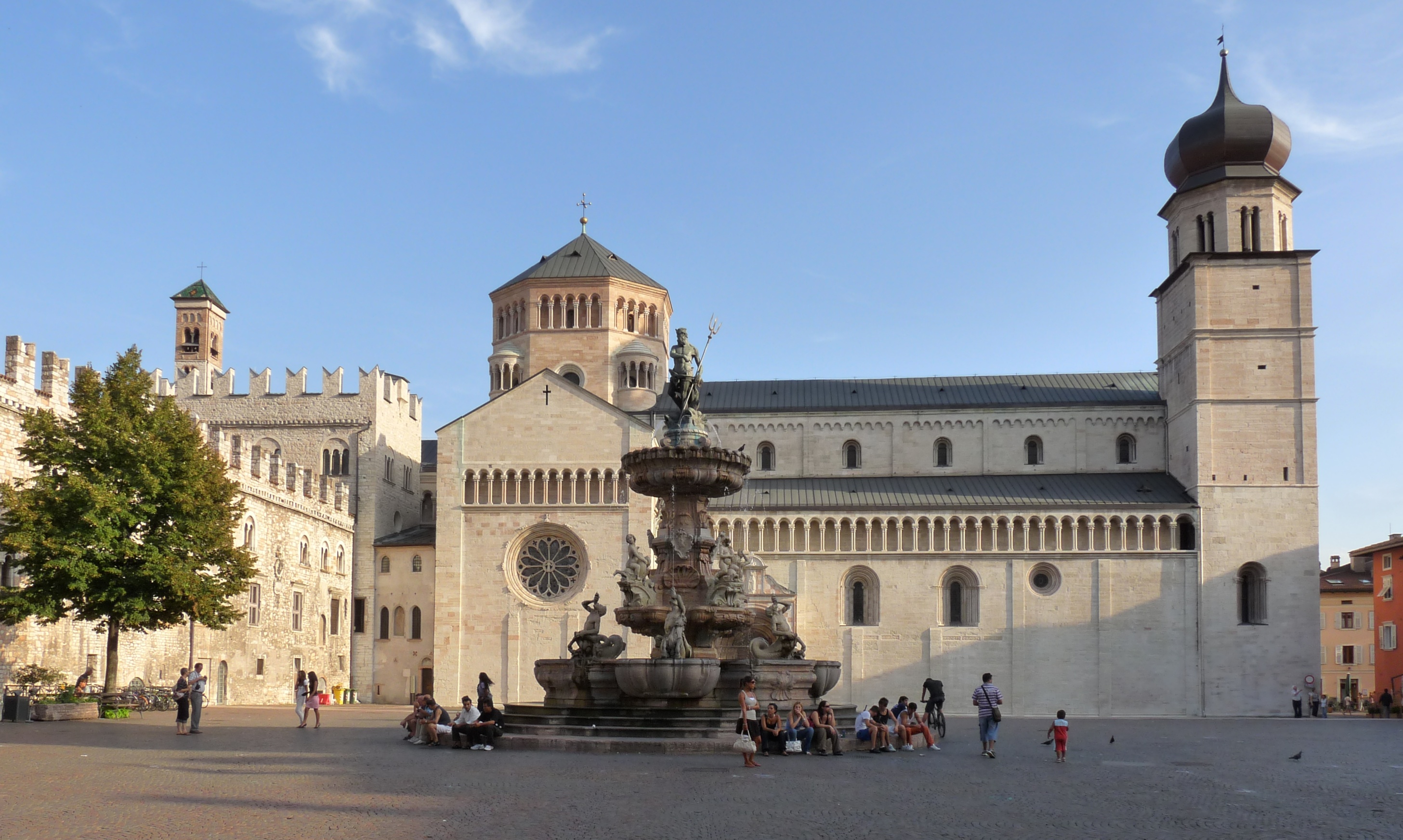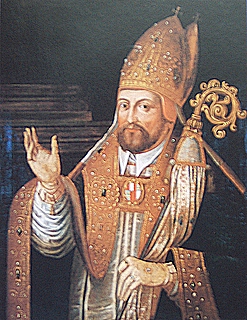|
Austrian Circle
The Austrian Circle () was an Imperial Circle of the Holy Roman Empire. It was one of the four Imperial Circles created by decree after the 1512 Diet at Cologne, twelve years after the original six Circles were established in the course of the Imperial Reform. It roughly corresponds to present-day Austria (except for Salzburg and Burgenland), Slovenia, and the Trentino-Alto Adige/Südtirol and Venezia Giulia regions of Northern Italy, but also comprised the Further Austrian territories in the former Swabian stem duchy. Organisation The Austrian Circle was largely coterminous with the "Hereditary Lands" (''Erblande'') of the House of Habsburg, dominated by the Archduchy of Austria. Beside the Habsburg lands, which had a single collective seat to the Reichstag, it included the Prince-Bishoprics of Trent and Brixen, which, however, were largely ruled within the Habsburg lands of Tyrol, and some little vassal principalities. The Circle's territory was again enlarged with the ... [...More Info...] [...Related Items...] OR: [Wikipedia] [Google] [Baidu] |
Erblande
The ("Hereditary Lands") of the House of Habsburg formed the Alpine heartland of the Habsburg monarchy.Kann, ''Habsburg Empire'', 1–4. They were the hereditary possessions of the Habsburgs within the Holy Roman Empire from before 1526. The were not all unified under the head of the dynasty prior to the 17th century. They were divided into several groupings: the Archduchy of Austria, Inner Austria, the County of Tyrol, and Further Austria.Ingrao, ''Habsburg Monarchy'', 5–9. The did not include either the Lands of the Bohemian Crown or the Lands of the Hungarian Crown, since both monarchies were elective when the Habsburg Ferdinand I was elected to their thrones in 1526. Ferdinand divided the between his three heirs in 1564 and they were not reunited until 1665. The were gathered into the Austrian Circle in 1512. This ensured a direct connection between the junior lines of the Austrian Habsburgs and the Empire after 1564, since throughout this period the Austrian Habs ... [...More Info...] [...Related Items...] OR: [Wikipedia] [Google] [Baidu] |
Friuli-Venezia Giulia
Friuli-Venezia Giulia () is one of the 20 regions of Italy and one of five autonomous regions with special statute. The regional capital is Trieste on the Gulf of Trieste, a bay of the Adriatic Sea. Friuli-Venezia Giulia has an area of and about 1,194,095 inhabitants as of 2025. A natural opening to the sea for many central European countries, the region is traversed by the major transport routes between the east and west of Southern Europe. It encompasses the historical-geographical region of Friuli and a small portion of the historical region of —also known in English as the Julian March—each with its own distinct history, traditions and identity. Name ''Friuli'' comes from the Latin term (' Julius' forum'), a center for commerce in the Roman times, which today corresponds to the city of Cividale. The denomination ''Venezia Giulia'' ('Julian Venetia', not referring to the city of Venice but to the Roman province of Venetia et Histria) was proposed by the Italian l ... [...More Info...] [...Related Items...] OR: [Wikipedia] [Google] [Baidu] |
Treaty Of Teschen
The Treaty of Teschen (, ; ) was signed on 13 May 1779 in Teschen, then in Austrian Silesia, between the Austrian Habsburg monarchy and the Kingdom of Prussia, which officially ended the War of the Bavarian Succession.Brendan Simms, ''The Struggle for Mastery in Germany, 1779–1850'' (1998) Background When the childless Wittelsbach elector Maximilian III Joseph of Bavaria died in 1777, the Habsburg emperor Joseph II sought to acquire most of the Electorate of Bavaria and the Upper Palatinate, basing his claim on his marriage with the late elector's sister, Maria Josepha, who had died in 1767. Maximilian's direct heir was his distant cousin Count Palatine and Prince-Elector Charles Theodore (1724–1799), by prior succession agreements between the Bavarian and Palatinate branches of the Wittelsbach dynasty. Charles Theodore was amenable to an agreement with Emperor Joseph II that would allow him to acquire parts of the Austrian Netherlands in exchange for parts of his ... [...More Info...] [...Related Items...] OR: [Wikipedia] [Google] [Baidu] |
Innviertel
The Innviertel (literally German language, German for "Inn Quarter"; officially called the ; ) is a traditional Austrian region southeast of the Inn (river), Inn river. It forms the western part of the States of Austria, state of Upper Austria and borders the Germany, German state of Bavaria. The Innviertel is one of the four traditional "quarters" of Upper Austria, the others being Hausruckviertel, Mühlviertel, and Traunviertel. The Innviertel is the northwestern quarter of Upper Austria and includes the districts Braunau am Inn District, Braunau am Inn, Ried im Innkreis District, Ried im Innkreis and Schärding District, Schärding. Since the formation of the District Captaincy (Austria), political districts in 1868, the quarters in Upper Austria no longer have a legal basis and are purely regional names. The older Habsburg districts (), which were still based on the old quarters, were superseded. Unlike the rest of Upper Austria, most of the area was part of Duchy of Bavaria ... [...More Info...] [...Related Items...] OR: [Wikipedia] [Google] [Baidu] |
Vassal
A vassal or liege subject is a person regarded as having a mutual obligation to a lord or monarch, in the context of the feudal system in medieval Europe. While the subordinate party is called a vassal, the dominant party is called a suzerain. The rights and obligations of a vassal are called vassalage, while the rights and obligations of a suzerain are called suzerainty. The obligations of a vassal often included military support by knights in exchange for certain privileges, usually including land held as a tenant or fief. The term is also applied to similar arrangements in other feudal societies. In contrast, fealty (''fidelitas'') was sworn, unconditional loyalty to a monarch. European vassalage In fully developed vassalage, the lord and the vassal would take part in a commendation ceremony composed of two parts, the Homage (feudal), homage and the fealty, including the use of Christian sacraments to show its sacred importance. According to Eginhard's brief description, ... [...More Info...] [...Related Items...] OR: [Wikipedia] [Google] [Baidu] |
County Of Tyrol
The (Princely) County of Tyrol was an Imperial State, estate of the Holy Roman Empire established about 1140. After 1253, it was ruled by the House of Gorizia and from 1363 by the House of Habsburg. In 1804, the County of Tyrol, unified with the German Mediatisation, secularised prince-bishoprics of Prince-Bishopric of Trent, Trent and Prince-Bishopric of Brixen, Brixen, became a crown land of the Austrian Empire. From 1867, it was a Cisleithanian crown land of Austria-Hungary. Today the territory of the historic crown land is divided between the Italy, Italian autonomous region of Trentino-Alto Adige/Südtirol and the Austrian state of Tyrol (state), Tyrol. The two parts are today associated again in the Tyrol–South Tyrol–Trentino Euroregion. History Establishment At least since King Otto I of Germany had conquered the former Kingdom of the Lombards, Lombard Kingdom of Kingdom of Italy (Holy Roman Empire), Italy in 961 and had himself crowned Holy Roman emperor in R ... [...More Info...] [...Related Items...] OR: [Wikipedia] [Google] [Baidu] |
Bishopric Of Brixen
The Prince-Bishopric of Brixen () was an ecclesiastical principality of the Holy Roman Empire in the present-day northern Italian province of South Tyrol. It should not be confused with the larger Catholic diocese, over which the prince-bishops exercised only the ecclesiastical authority of an ordinary bishop. The bishopric in the Eisack/Isarco valley was established in the 6th century and gradually received more secular powers. It gained imperial immediacy in 1027 and remained an Imperial Estate until 1803, when it was secularised to Tyrol. The diocese, however, existed until 1964, and is now part of the Diocese of Bolzano-Brixen. History The Diocese of Brixen is the continuation of that of Säben Abbey near Klausen, which, according to legend, was founded about 350 as ''Sabiona'' by Saint Cassian of Imola. As early as the 3rd century, Christianity had penetrated Sabiona, at that time a Roman custom station of considerable commercial importance. It may have been a retrea ... [...More Info...] [...Related Items...] OR: [Wikipedia] [Google] [Baidu] |
Prince-Bishopric Of Trent
The Prince-Bishopric of Trent (; ) was an ecclesiastical principality roughly corresponding to the present-day Northern Italy, Northern Italian autonomous province of Trentino. It was created in 1027 and existed until 1803, when it was German mediatisation, secularised and absorbed into the County of Tyrol held by the House of Habsburg. Trent was a ''Hochstift'', an Imperial State under the authority of a prince-bishop at Trento. History Middle Ages A first Bishop of Trent is recorded as a participant of the synod at Aquileia in 381. The area was part of the Kingdom of the Lombards, Lombard Kingdom and the Kingdom of Italy (medieval), Kingdom of Italy, until the 951 campaign of Kingdom of Germany, German king Otto I, Holy Roman Emperor, Otto I against King Berengar II of Italy. In 952 Berengar had to cede the March of Verona to Otto, who enfeoffed his younger brother Duke Henry I, Duke of Bavaria, Henry I of Bavaria. From 1004 Emperor Henry II, Holy Roman Emperor, Henry II ... [...More Info...] [...Related Items...] OR: [Wikipedia] [Google] [Baidu] |
Prince-Bishop
A prince-bishop is a bishop who is also the civil ruler of some secular principality and sovereignty, as opposed to '' Prince of the Church'' itself, a title associated with cardinals. Since 1951, the sole extant prince-bishop has been the Bishop of Urgell, Catalonia, who has remained ''ex officio'' one of two co-princes of Andorra, along with the French president. Overview In the West, with the decline of imperial power from the 4th century onwards in the face of the barbarian invasions, sometimes Christian bishops of cities took the place of the Roman commander, made secular decisions for the city and led their own troops when necessary. Later relations between a prince-bishop and the burghers were invariably not cordial. As cities demanded charters from emperors, kings, or their prince-bishops and declared themselves independent of the secular territorial magnates, friction intensified between burghers and bishops. The principality or prince-bishopric (Hochstift) r ... [...More Info...] [...Related Items...] OR: [Wikipedia] [Google] [Baidu] |
Archduchy Of Austria
The Archduchy of Austria (; ) was a major Princes of the Holy Roman Empire, principality of the Holy Roman Empire and the nucleus of the Habsburg monarchy. With its capital at Vienna, the archduchy was centered at the Empire's southeastern periphery. Its present name originates from the Frankish term ''Oustrich'' – Eastern Kingdom (east of the Francia, Frankish kingdom). The archduchy developed out of the Bavarian Margraviate of Austria, elevated to the Duchy of Austria according to the 1156 ''Privilegium Minus'' by Emperor Frederick Barbarossa. The House of Habsburg came to the Austrian throne in Vienna in 1282 and in 1453 Emperor Frederick III, Holy Roman Emperor, Frederick III, also the ruler of Austria, officially adopted the archducal title. From the 15th century onward, all Holy Roman Emperors but Charles VII, Holy Roman Emperor, one were Austrian archdukes and with the acquisition of the Lands of the Bohemian Crown, Bohemian and Kingdom of Hungary (1526–1867), Hungarian ... [...More Info...] [...Related Items...] OR: [Wikipedia] [Google] [Baidu] |
House Of Habsburg
The House of Habsburg (; ), also known as the House of Austria, was one of the most powerful Dynasty, dynasties in the history of Europe and Western civilization. They were best known for their inbreeding and for ruling vast realms throughout Europe during the Middle Ages and early modern period, including the Holy Roman Empire and Habsburg Spain, Spain. The house takes its name from Habsburg Castle, a fortress built in the 1020s in present-day Switzerland by Radbot of Klettgau, who named his fortress Habsburg. His grandson Otto II, Count of Habsburg, Otto II was the first to take the fortress name as his own, adding "Count of Habsburg" to his title. In 1273, Count Radbot's seventh-generation descendant, Rudolph I of Germany, Rudolph, was elected King of the Romans. Taking advantage of the extinction of the Babenbergs and of his victory over Ottokar II of Bohemia at the Battle on the Marchfeld in 1278, he appointed his sons as Dukes of Austria and moved the family's power base ... [...More Info...] [...Related Items...] OR: [Wikipedia] [Google] [Baidu] |







